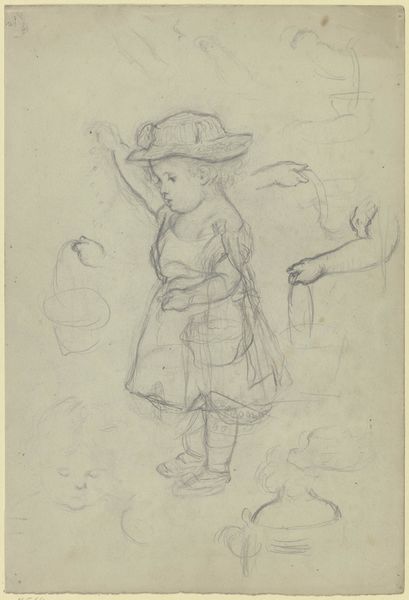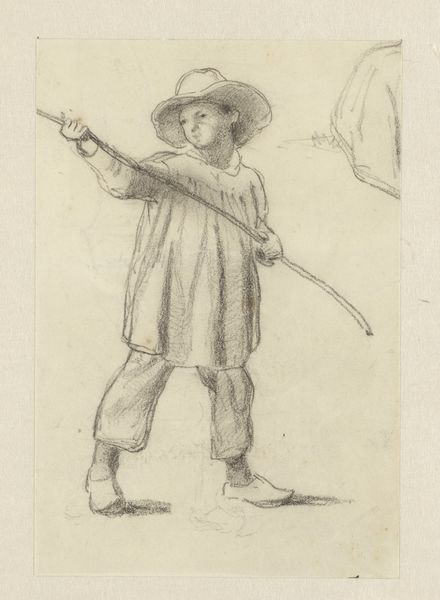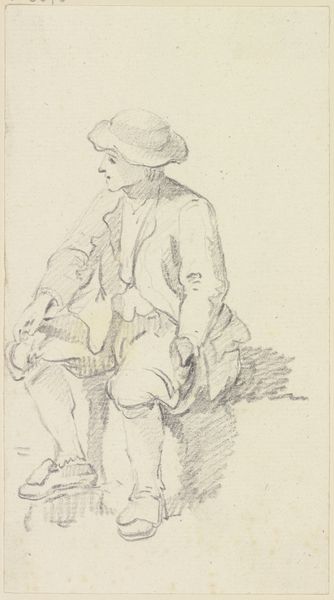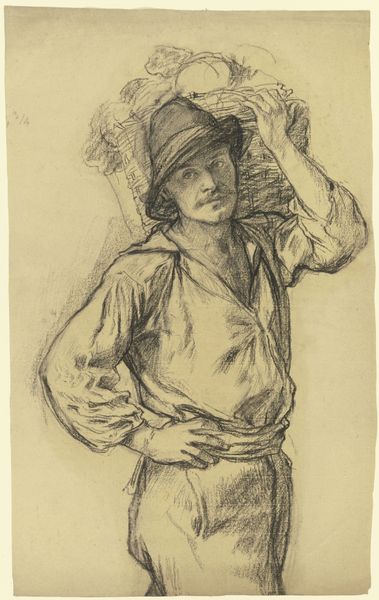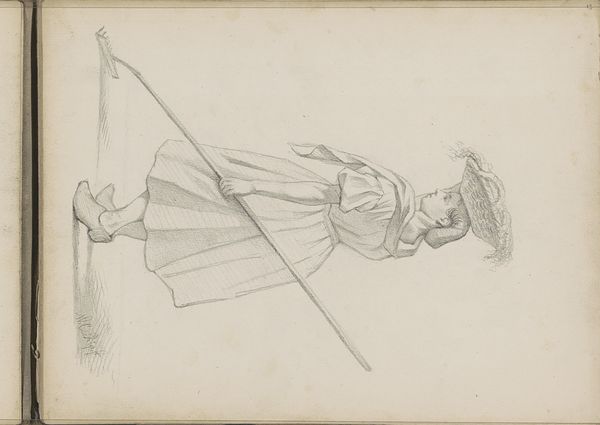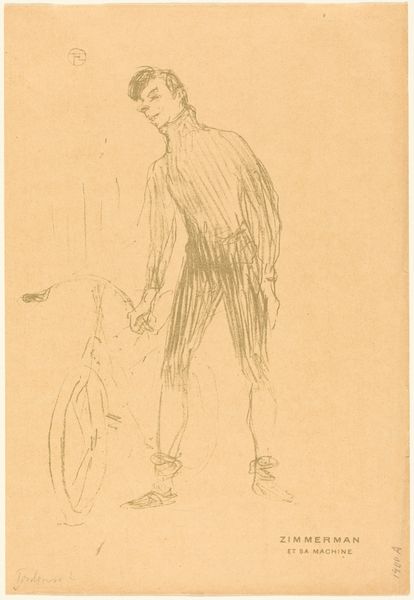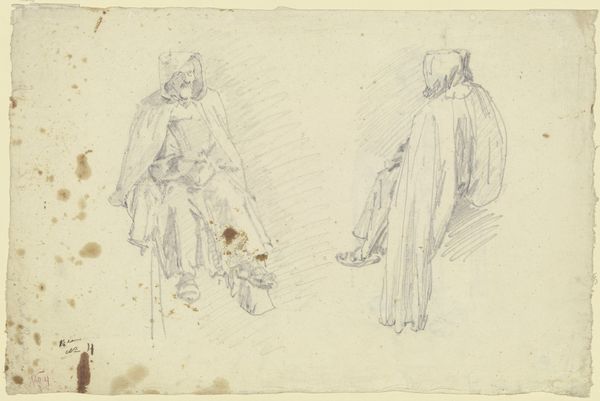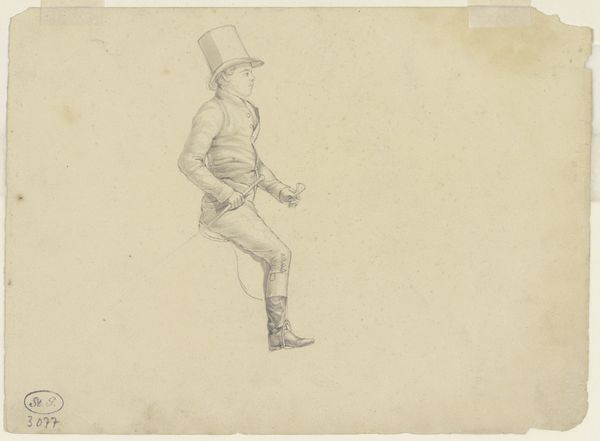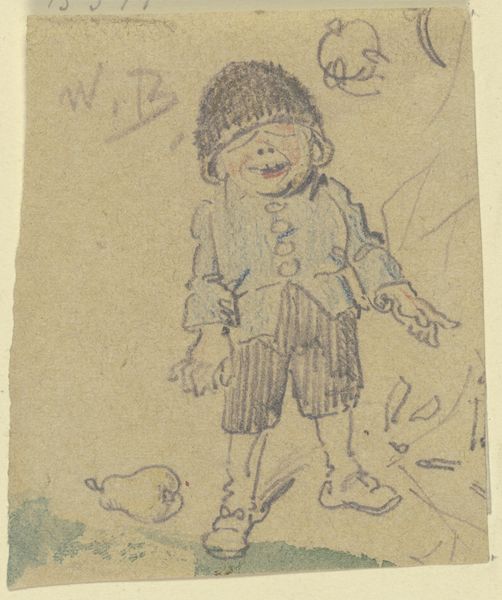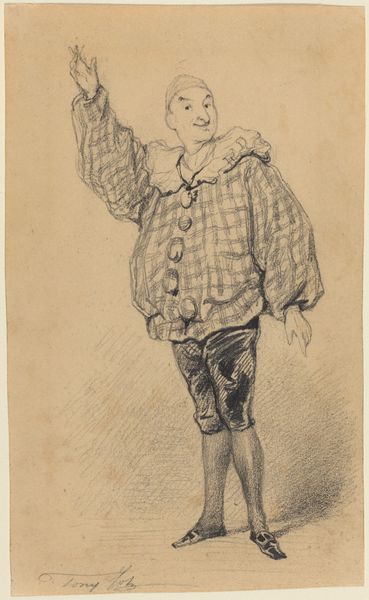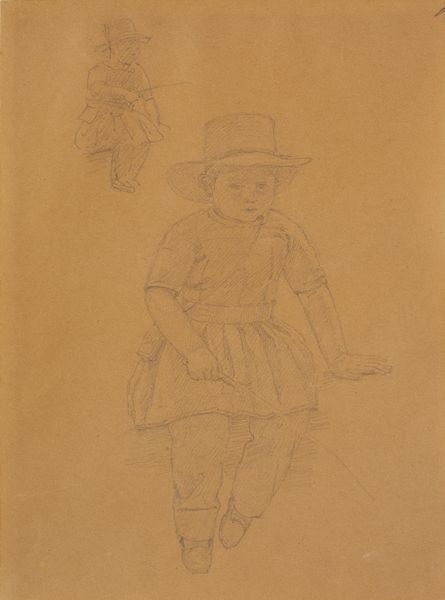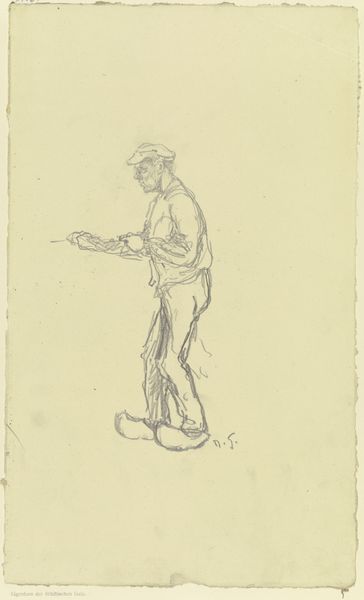
Copyright: Public Domain
Editor: Here we have Otto Scholderer’s 1878 pencil drawing, "Donkey Rider," currently held in the Städel Museum. I'm immediately struck by the lightness of the line work. It feels very preliminary, like a study. What stands out to you, in terms of form and technique? Curator: The efficiency of line is indeed remarkable. Note how Scholderer employs hatching and cross-hatching to define form, particularly in the figure's clothing and the implied texture of the donkey's fur. The composition is bifurcated; the rider on the left and a ghostly sketch of the legs on the right, which creates a compelling spatial dynamic. How does the lack of complete rendering impact your understanding? Editor: It makes me think about the artistic process itself, the layers and decisions involved in creating a finished piece. It’s like seeing behind the curtain. But is there a contrast maybe at play between realism and romanticism due to the artist style in question? Curator: Precisely. Although categorized under realism, the ethereal quality of the uncompleted leg study hints at romanticism’s embrace of the suggestive and the fragmentary. Scholderer teases us with the possible form rather than fully defining it, which engages the viewer's imagination. Do you find any disharmony in the combination of both styles? Editor: Not really. It almost enriches the drawing, layering depth with its composition style and visual elements. Curator: The superposition highlights formal analysis, moving us beyond simple representation to a discussion of process and artistic intent. Seeing the implied figure is almost better. Editor: I see it now; by understanding the interplay of these techniques, we grasp how the piece’s inherent qualities elevate it from a mere sketch to a profound study in form and the artistic vision! Thank you for showing me this vision.
Comments
No comments
Be the first to comment and join the conversation on the ultimate creative platform.
